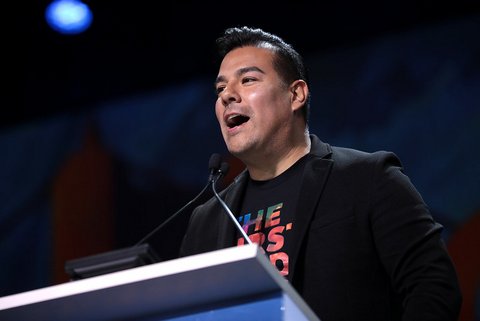
28 Nov Challenges Persist for Homeowners of Color, but Help is Available

Attorney Mary Day with her client Danny Bishop , who was charged $90,000 in fines for code enforcement violations on his mother’s property in Richmond — a significant portion of which was in error. (Screenshot captured by Natasha Kaye / The CC Pulse)
By Natasha Kaye
After years of caring for his elderly mother and her ailing mental health, the last thing Danny Bishop needed was $90,000 in fines for code enforcement violations for failing to upkeep his mother’s property. Bishop says when he went to the code enforcers office in Richmond to ask why these debts were so high, he was ignored until his lawyer, Mary Day, went to speak with them where the city finally realized they “made a mistake” and lowered the debt by $20,000.
“They didn’t really want to tell me,” Bishop said. “I didn’t understand why they wouldn’t tell me, but basically it looked like they were just trying to take the house.”
His story, which he shared Nov. 2 in an Ethnic Media Services briefing, is a familiar one for homeowners across the nation. As mortgages and other debt payments are being unpaused following the pandemic, many borrowers who have still not financially recovered are struggling to hold onto their homes.
Bishop spoke on a panel along with housing experts and attorneys who identified challenges and offered solutions to assist those affected.
Joe Jaramillo, a senior attorney with Housing and Economic Rights Advocates, discussed three “significant challenges” to securing home ownership that disproportionately affect people of color and other vulnerable communities.
First, he mentioned the cumbersome probate process after a grandparent or parent dies without a will to declare who will inherit the house. If there is no will before the homeowner’s death, the family must enter probate court to sort out inheritance, which comes with its own set of costly legal fees and accessibility barriers.
Jaramillio also discussed the Property Assessed Clean Energy program, which finances energy efficient home improvements by adding an additional assessment line item on property taxes at the end of the year. The program has been accused of predatory practices. Many low-income, Latino homeowners in the Central Valley say they were specifically told by PACE financers that these were free government services when they are not — homeowners pay for these services through the increase in property tax bills, often raising the bill far past what the homeowners can feasibly afford.
“PACE financing has put thousands of homeowners of color at risk because these loans are secured by the property,” Jaramillo said, “so if they’re not paid, the property could be put at foreclosure and they can even be sued for foreclosure by the PACE program itself.”
>>>Read: Buying a Car? Take Time to Read the Fine Print
He also discussed the reemergence of “zombie” second mortgage loans, additional mortgages that appear to have been forgiven until years after the fact when lenders come back asking for the remaining debt. Homeowners face penalties and foreclosure if they do not pay off these loans, and given that funding from pandemic-era payment relief programs is dwindling, these loans are coming back to haunt borrowers.
Attorney Joanna Torres was joined by her client Saul de la Cruz, who shared his experience as a victim of one of these zombie loan mortgages. De la Cruz and his family purchased a home in Salinas and had their loans modified and split into two after experiencing financial hardships.
The loans were distributed through two banks, but after one of the banks closed, the de la Cruzes were led to believe the loan was forgiven, especially considering no one had contacted them regarding their outstanding balance. However, the closed bank was eventually reclaimed by another bank that returned to demand the funds from the de la Cruzes, leaving them with no time and nowhere near enough money to pay them off.
“Now, borrowers are responsible for making a workout plan to repay those payments that were missed, but not every borrower was informed,” Torres said. “One of the things we saw was that individuals who spoke Spanish were having a lot more difficulty getting through with mortgage servicers to clearly understand what their options were.”
Fortunately, for people like Bishop and de la Cruz, there are non-predatory mortgage relief options like the services offered through the California Mortgage Relief Program.
Rebecca Franklin, the program’s president, says its goal is to help increase awareness of property taxes and, most of all, help people catch up on missed payments through grants of up to $80,000.
“The program recognizes that certain ethnic and racial groups were hit harder due to the pandemic, and a goal of our program is to retain that generational wealth of these first-time homebuyers who worked and sacrificed so much,” Franklin said.
>>>Read: Student Debt Fuels Racial Wealth Gap, Advocates Say
The program will run into 2025 or until funding runs out. Having distributed $650 million of its $1 billion sum since December 2021, Franklin believes the funds will dry up before the program’s official end date.
“I think a lot of times when homeowners hear about our program they say, ‘Someone is giving me 80,000 I don’t have to pay back? That’s too good to be true; this isn’t real.’ Well, it is real, and we want homeowners to connect with us,” Franklin said.
Homeowners and anyone with mortgage-related inquiries are encouraged to visit https://camortgagerelief.org/ to learn more about their options.






No Comments